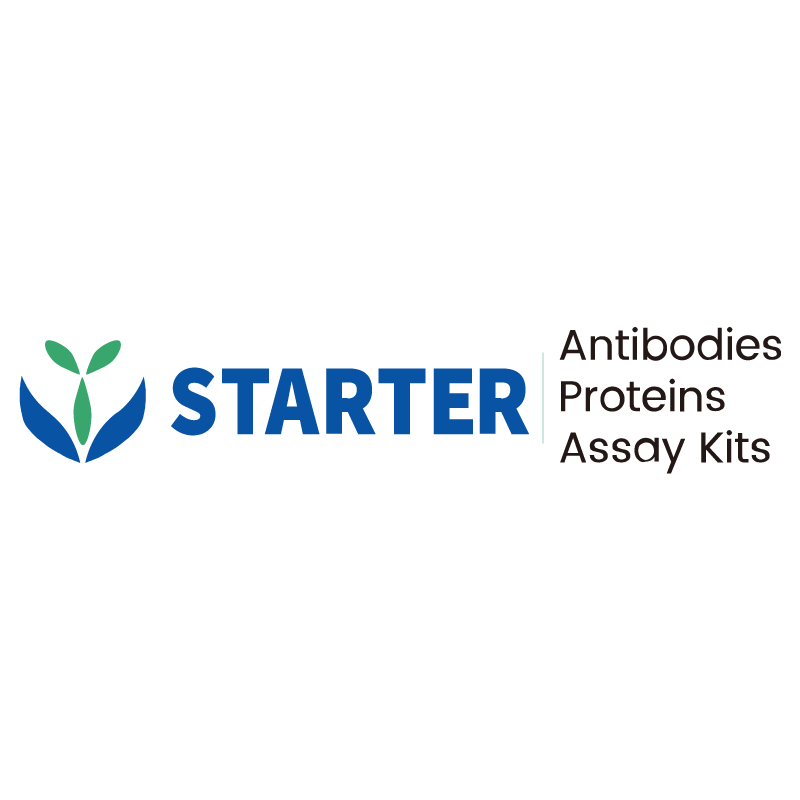WB result of BANK1 Recombinant Rabbit mAb
Primary antibody: BANK1 Recombinant Rabbit mAb at 1/1000 dilution
Lane 1: Jurkat whole cell lysate 20 µg
Lane 2: Daudi whole cell lysate 20 µg
Negative control: Jurkat whole cell lysate
Secondary antibody: Goat Anti-rabbit IgG, (H+L), HRP conjugated at 1/10000 dilution
Predicted MW: 89 kDa
Observed MW: 110 kDa
Product Details
Product Details
Product Specification
| Host | Rabbit |
| Antigen | BANK1 |
| Synonyms | B-cell scaffold protein with ankyrin repeats |
| Immunogen | Recombinant Protein |
| Location | Cytoplasm |
| Accession | Q8NDB2 |
| Clone Number | SDT-2265-37 |
| Antibody Type | Recombinant mAb |
| Isotype | IgG |
| Application | WB, IHC-P |
| Reactivity | Hu, Ms, Rt |
| Positive Sample | Daudi, mouse spleen |
| Purification | Protein A |
| Concentration | 1 mg/ml |
| Conjugation | Unconjugated |
| Physical Appearance | Liquid |
| Storage Buffer | PBS |
| Stability & Storage | 12 months from date of receipt / reconstitution, 4 °C as supplied |
Dilution
| application | dilution | species |
| WB | 1:1000 | Hu, Ms |
| IHC-P | 1:100 | Hu, Ms, Rt |
Background
BANK1, or B cell scaffold protein with ankyrin repeats 1, is primarily expressed in B cells and plays multiple roles in B cell signaling pathways, including B cell receptor signaling, CD40-related signaling, and Toll-like receptor (TLR) signaling. The gene for BANK1 is located on chromosome 4q24 and contains genetic variants associated with autoimmune diseases such as systemic lupus erythematosus (SLE) and rheumatoid arthritis. The protein has three conserved domains: two double ankyrin repeat-like motifs, a coiled-coil domain, and a Dof/BCAP/BANK (DBB) motif. It can bind to Src family kinases like LYN and BLK, and interact with PLC-γ2 and TRAF6, modulating various signaling processes. Different isoforms of BANK1 exist, with the full-length isoform and the Δ2 isoform (lacking exon 2) having distinct roles in disease susceptibility.
Picture
Picture
Western Blot
WB result of BANK1 Recombinant Rabbit mAb
Primary antibody: BANK1 Recombinant Rabbit mAb at 1/1000 dilution
Lane 1: mouse spleen lysate 20 µg
Secondary antibody: Goat Anti-rabbit IgG, (H+L), HRP conjugated at 1/10000 dilution
Predicted MW: 89 kDa
Observed MW: 80-115 kDa
Immunohistochemistry
IHC shows positive staining in paraffin-embedded human tonsil. Anti-BANK1 antibody was used at 1/100 dilution, followed by a HRP Polymer for Mouse & Rabbit IgG (ready to use). Counterstained with hematoxylin. Heat mediated antigen retrieval with Tris/EDTA buffer pH9.0 was performed before commencing with IHC staining protocol.
IHC shows positive staining in paraffin-embedded human spleen. Anti-BANK1 antibody was used at 1/100 dilution, followed by a HRP Polymer for Mouse & Rabbit IgG (ready to use). Counterstained with hematoxylin. Heat mediated antigen retrieval with Tris/EDTA buffer pH9.0 was performed before commencing with IHC staining protocol.
Negative control: IHC shows negative staining in paraffin-embedded human cerebral cortex. Anti-BANK1 antibody was used at 1/100 dilution, followed by a HRP Polymer for Mouse & Rabbit IgG (ready to use). Counterstained with hematoxylin. Heat mediated antigen retrieval with Tris/EDTA buffer pH9.0 was performed before commencing with IHC staining protocol.
IHC shows positive staining in paraffin-embedded mouse spleen. Anti-BANK1 antibody was used at 1/100 dilution, followed by a HRP Polymer for Mouse & Rabbit IgG (ready to use). Counterstained with hematoxylin. Heat mediated antigen retrieval with Tris/EDTA buffer pH9.0 was performed before commencing with IHC staining protocol.
IHC shows positive staining in paraffin-embedded rat spleen. Anti-BANK1 antibody was used at 1/100 dilution, followed by a HRP Polymer for Mouse & Rabbit IgG (ready to use). Counterstained with hematoxylin. Heat mediated antigen retrieval with Tris/EDTA buffer pH9.0 was performed before commencing with IHC staining protocol.


